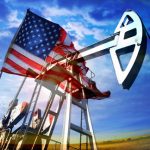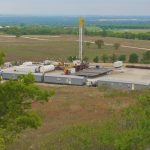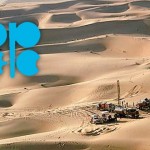From Bloomberg
Clashes resumed near Libya’s biggest oil field, a day after eastern military commander Khalifa Haftar said his forces had reached the deposit in a push to secure the southwestern region and its energy installations.
Haftar’s self-styled Libyan National Army exchanged fire early on Thursday with troops led by Ali Kana, a supporter of the rival United Nations-backed authorities in Tripoli in the west of the divided country, according to people with knowledge of the situation, asking not to be identified because they aren’t allowed to speak to media.
The LNA, Libya’s largest and best-organized military force, already controls the so-called oil crescent, a coastal area containing the major exporting terminals. Its push southward toward Sharara has stocked fears among Haftar’s foes and increased concern in the oil market for the stability of supply in the nation with Africa’s largest proven crude reserves.
Sharara, which can pump 300,000 barrels a day of oil, is a joint venture between Libya’s National Oil Corp., Repsol SA, Total SA, OMV AG and Equinor ASA. It has been closed since December by armed residents demanding better pay and investment in the remote area.
Haftar’s forces have reached substation unit NC-186, about 30 kilometers (19 miles) away from the main oil field but have yet to take full control of Sharara, according to other people familiar with the situation. Their account seemed to contradict the LNA’s earlier announcement.
“Today our forces reached Sharara, in agreement with everyone at the field,” Ahmed Al-Mismari, the LNA spokesman, said Wednesday in a televised news conference. “We are all Libyans, one Libyan army.”
Mismari said the LNA took the area without a fight but didn’t give an indication as to whether it would hand the field over to the NOC, nor when it was expected to restart production. Officials at Libya’s NOC didn’t immediately respond to requests for comment.
Force Majeure
The warlord’s army called on the NOC to lift the force majeure in place at Sharara. Force majeure is a legal status protecting a party from liability if it can’t fulfill a contract for reasons beyond its control. However, the NOC hasn’t yet issued instructions to restart production at the field, according to people involved in the situation.
Haftar — backed by Russia, Egypt and the United Arab Emirates — has built the main force opposing the UN-backed government of Fayez al-Sarraj in Tripoli, the capital. It’s too early to say what his southern power play will mean for Libya’s oil industry. But if his previous confrontation with the Tripoli-based NOC is a guide, the outlook isn’t encouraging.
Most of Libya’s crude shipments were suspended for weeks in June due to a standoff between Haftar and the NOC. Haftar had recaptured two important export terminals from rivals and transferred control of those ports and three others to an oil authority in eastern Libya that lacked international recognition. Markets were deprived of some 800,000 barrels a day, and Libya lost $930 million in sales.
The lack of clarity about what’s happening now in the south casts doubt on Libya’s plan to boost output to 2.1 million barrels a day by the end of 2021. The nation’s internal turmoil led the Organization of Petroleum Exporting Countries in December to exempt Libya from participating in global production cuts.
Conflicts between rival militias, as well as political jockeying by parallel governments in the east and west, have stunted Libya’s efforts to revive output following the 2011 uprising that ousted Muammar Qaddafi.







